Is parsley a vegetable or not?
The group of vegetables includes plants that are cultivated in the garden. There are many representatives of various families among them. Both the stem and the leaves are edible in vegetables, but more so are the roots. Determining whether a particular plant belongs to vegetables is sometimes difficult.
Attitude to parsley since ancient times, respectful, because it was believed that she grew out of the blood of the murdered son of Osiris. No wonder the Egyptians, arranging religious holidays, wove wreaths of fragrant grass. Parsley is still revered as one of the useful plants.
Content:
- Parsley - what is it?
- The best varieties of parsley for the garden
- Terms and rules for planting a herbaceous plant
- Parsley Care Tips
- Harvesting and storage of garden crops
- Properties and uses of parsley
Parsley - what is it?
From garden plants, parsley has been cultivated for a long time. It belongs to leafy vegetables because leaves and petioles are eaten. The Umbrella family, to which parsley belongs, is famous for crops such as celery, dill, and carrots. In representatives of this group of vegetables, flowering shoots are formed, which are removed to obtain full-fledged raw materials.
Despite the fact that parsley is similar in its characteristics to herbs, it is considered a vegetable.
Parsley is a two-year culture, since the first year leaves and roots are formed in it, and seeds are obtained in the second year. There are also annual varieties of garden crops.
The herbaceous plant has feathery leaves, the plate of which is divided into two or three parts. In the second year of life, whitish flowers with heart-shaped petals appear on the stem. Parsley is cultivated in all countries except the northern regions. Of all types of vegetables, preference is given to leafy ones.
The best varieties of parsley for the garden
Both parsley roots and leaves are used for food. Depending on this, plant varieties are also chosen:
- Common parsley is the most common. The spicy herb is famous for its luscious, bright green leaves. They are cut multiple times per season to be added to salads. The variety is famous for its high yield and average ripeness.
- The leaves of the Breeze variety remain fresh for a long time. Smooth and wavy, they can decorate any dish.
- Of late-ripening varieties, the Carnival variety is grown, which forms a large mass of dark green leaves during the growing season. Up to four kilograms of green mass is harvested from one square meter for winter use.
- The best variety of root parsley is Sugar. Root crops reach a length of thirty centimeters and have excellent taste. But they do not last long and are suitable for consumption in summer and autumn.
- For the autumn and winter use of the roots, the Bordovikskaya variety is grown. Grayish-white roots are stored for a long time and do not deteriorate during storage. Curly leaves of the herb are also used for food.
The difference between the types of parsley is significant. If only spicy herbs are needed, then leafy varieties of spices are chosen. They also have more green mass, and it is gentle and beautiful in appearance. But the root of such parsley is small and cannot be used for food.
Root varieties are grown not for greens, but for obtaining bitter root crops. There are few greens on the plant, it is tough and tasteless, but with constant plucking, they will get frail roots. To get both, both types of plants are planted.
Terms and rules for planting a herbaceous plant
The herb is sown at different times. Their choice depends on when they will collect the grass. In the spring, the seeds are buried in the garden in early April, when the ground warms up a little. You can plant parsley for the winter starting in late October. There are also summer planting dates in late June - early July. Before planting the grass, prepare the site by choosing well-lit soils. Too waterlogged places are not suitable for growing vegetables.
Having dug the site to a depth of five to seven centimeters, mineral fertilizers are applied. Four kilograms of compost, fifteen grams of superphosphate, twenty grams of ammonium nitrate and ten grams of potassium salt are enough per square meter. It is better to carry out preparatory work in the fall.
A clean and nutritious soil is important for parsley.
Parsley is sown with double-row ribbons with a distance of twenty centimeters between them. The seeding depth is chosen from two to three centimeters. Mix the parsley seeds well with the seeds of the lettuce, which sprouts faster and shows the direction of the rows. Before emergence, the crust is carefully removed with a rake from the ground.
Shoots of a spicy plant appear in 2-3 weeks. To speed up the process of their appearance, soak parsley seeds in warm water, lowering the bag with them for half an hour. Before planting, the seed is dried. For the winter, dry seeds are sown, having mulched the garden with humus or peat. The best precursors to parsley are pumpkin, zucchini, cucumbers... A spicy plant is not planted in one place every year, since it impoverishes the soil.
Parsley Care Tips
In order for parsley to give rich yields of leaves and root crops, it must be properly looked after:
- After the emergence of grass shoots, the row spacing is processed with a hoe to a depth of five to six centimeters.
- Weed beds with spicy grass regularly, removing weeds by hand.
- Thinning is carried out after the appearance of two true leaves. The first time two centimeters, the second four. The plucked-out stems are used as a seasoning.
- Water the vegetable crop 2-3 times per season, depending on weather and climatic conditions. Before harvesting, fertilizers are not applied so that nitrogen-containing elements do not accumulate in the parsley leaves.
Caring for parsley is simple and does not require time and effort.
Harvesting and storage of garden crops
Collect spicy herbs and parsley roots 2-3 months after planting. For storage for the winter, it is useful to leave the stems and leaves. They are cut at the root with a sharp knife during the summer, leaving the shoots inside. And in the fall, all the stems are cut off.
Store parsley more often in dried form. To do this, young greens are harvested in dry, sunny weather. After sorting through the stems of the grass, they are washed and dried on a towel. Tie the parsley in bunches and hang in the shade under a canopy. You cannot leave the grass in the sun - it will lose its beneficial properties and turn yellow. After the grass has completely dried, it is crushed and poured into a glass container for storage. You can immediately chop the plucked stems with leaves and dry them on a baking sheet in the oven, setting the temperature to 50 degrees.
Parsley is good both fresh and salted and dried, and retains its beneficial properties throughout the winter.
Freeze a herbaceous plant either in bunches, or in a crushed form. The washed and dried greens are folded into plastic bags and placed in the freezer. There is a way to freeze green mass into cubes by placing it in ice cube trays.
To provide yourself with a semi-finished parsley product, butter or vegetable oil is poured into the molds along with chopped parsley.After defrosting, such blanks are suitable for preparing salads or main dishes. The roots of parsley are placed in a cellar for the winter, keeping them at a temperature of two degrees Celsius and a humidity of 60 percent throughout the winter. The parsley leaves and the root, grated on a coarse grater, are salted, sprinkling the layers of the vegetable with coarse salt. The workpiece is stored in glass jars in the cellar.
Properties and uses of parsley
All parts of parsley are used in cooking. Not a single vegetable salad is complete without its fragrant leaves. Chopped stems are added to meat and fish when stewing. The vegetable adds spice to soups, sauces, marinades.
Traditional healers appreciate the plant for its richness of essential oils, flavonoids, coumarins, vitamins:
- Parsley seeds are used as a choleretic agent. Half a teaspoon of seeds is poured with two glasses of boiling water and insisted for eight hours. Take two to three tablespoons of infusion every two hours during the period of inflammation of the bladder, menstrual irregularities.
- The leaves of parsley contain selenium, vitamins that are necessary to improve the functions of vision, strengthen bones and teeth.
- The use of fresh and dried herbs helps with colic, flatulence, gastritis with high acidity.
- And the herb infusion is prepared and drunk to prevent pneumonia and the formation of tumors.
- Thanks to enzymes with the plant, fats and proteins are better absorbed by the body.
- Decoctions of parsley root are useful for people suffering from cystitis, cardiac edema. Pour one tablespoon of the crushed root with a glass of water and boil for ten minutes. They insist on the drink for an hour and then consume half a glass twice a day.
- Saves the herb infusion from itching in case of allergic dermatitis, demodicosis. Half a teaspoon of chopped grass is poured with cold water in an amount of 250 milliliters and left for eight hours. Having strained, consume two tablespoons up to four to five times a day.
- The grated root will help reduce the symptoms of prostatitis.
- Infusion of the root and herbs cleanse the liver and blood vessels.
- For insect bites, apply to damaged areas of the skin.
- Those who want to lose weight include parsley in their diet. The herb helps to remove fluid from the body.
- Decoction of parsley leaves can remove freckles, age spots.
- The benefits of parsley were known in antiquity, actively including the herb in the diet of future mothers and male warriors.
The well-known parsley is grown by all summer residents without exception. Let not everyone eat a spicy vegetable, but it decorates the area with curly greens and aroma. Everyone can grow a vegetable. And the benefits of the herb are many: parsley will improve the taste of any dish and help against diseases.
More information can be found in the video:



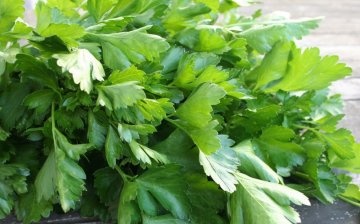
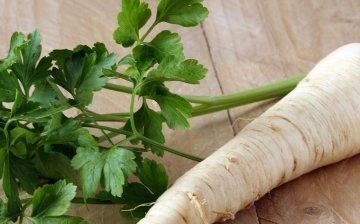
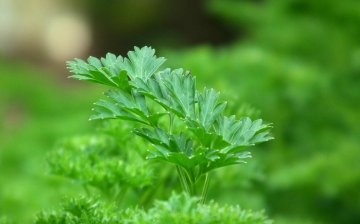
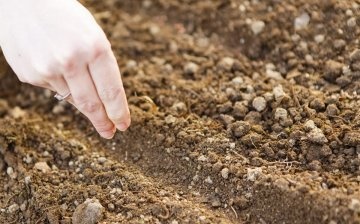
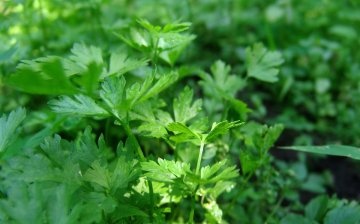
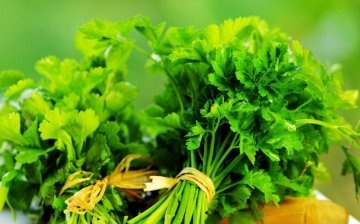
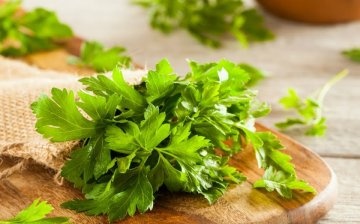







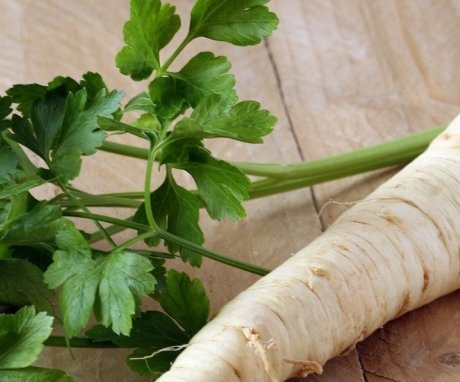
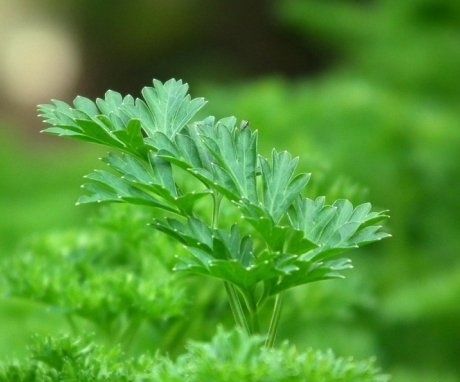
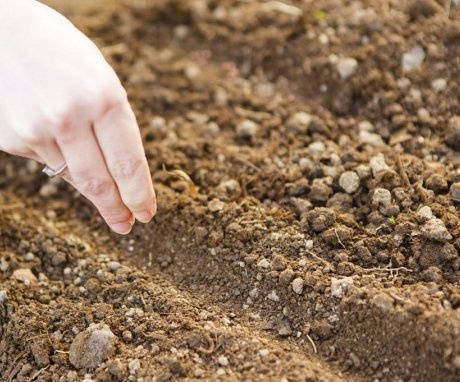
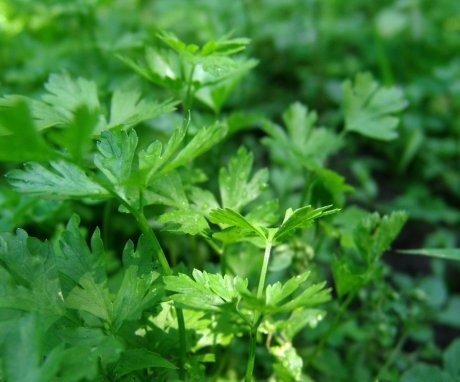
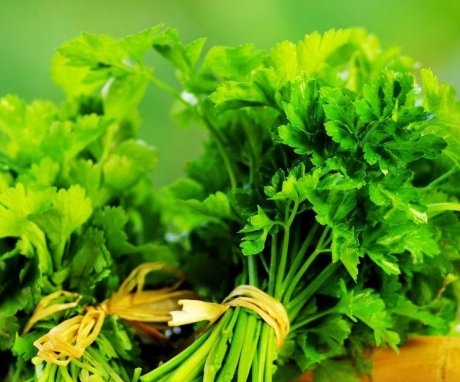
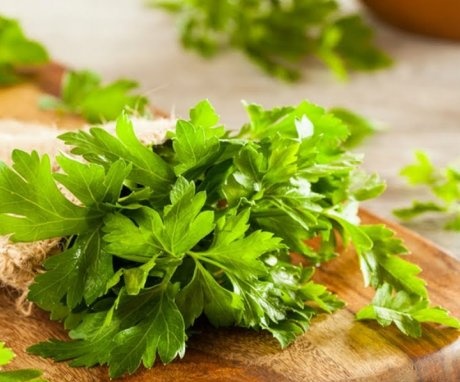
Parsley is certainly not a vegetable. This is a plant. We plant it in the country without fail. Plain and curly for greens and for blanks, as well as root. I recommend everyone to plant these three varieties too.
My parsley grows well and I don't do anything special about leaving. I collect such a crop that I distribute to friends. I think the best storage is freezing. I use parsley not only for food, but also in the form of face masks.
AnnaAlimova here you are writing correctly about the preparation of parsley, it is very good to freeze it. However, it is not recommended to freeze root parsley for the winter. Cut it into small, small cubes and grind with salt. Put in a glass jar with a glass lid, put it in the bottom of the refrigerator. It will be right!
I like to eat parsley in the ear and in some salads, and despite all its usefulness for the female body and quality, I somehow don’t really like it in food, either it’s a matter of habit, or I don’t know.